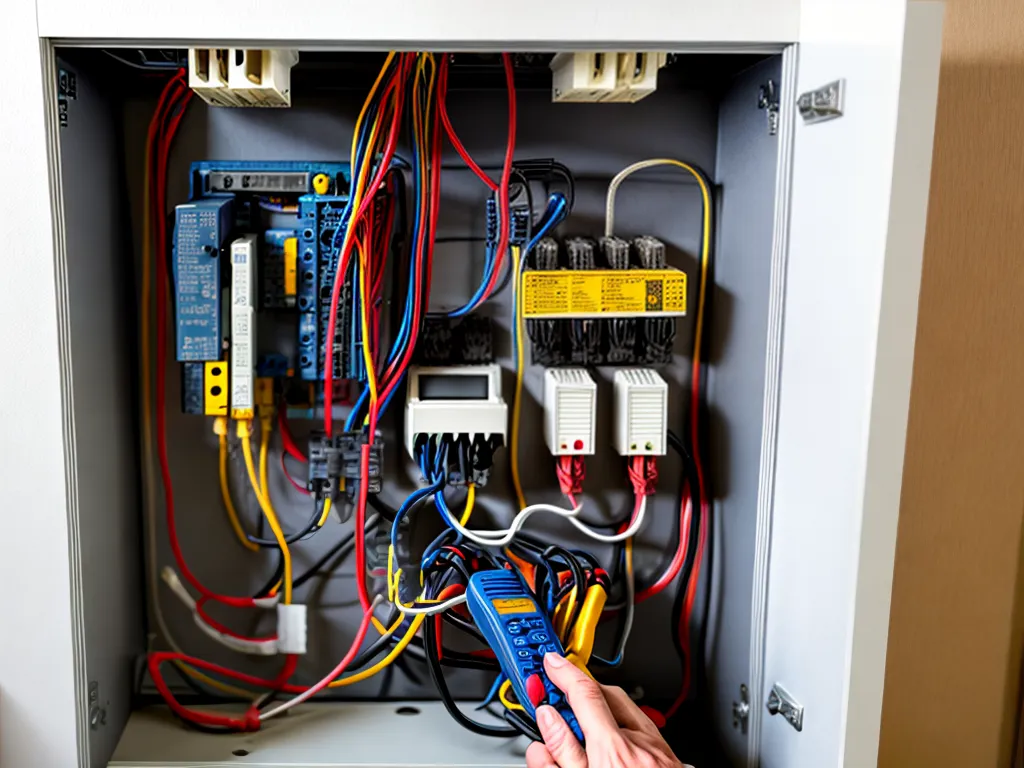
How to Install a 200 Amp Electrical Service Panel Yourself
Installing a 200 amp electrical service panel is a big project that requires proper planning, materials, and safety precautions. As a homeowner, you can save money by installing it yourself, but you need to follow all electrical codes and get the proper permits. With adequate preparation and care, it is possible to safely upgrade your home's electrical service on your own.
Materials and Tools Needed
To install a new 200 amp panel, you will need:
-
200 amp load center or panel box - This is the main component. Choose a model rated for 200 amps from reputable brands like Square D or Eaton.
-
Weatherproof enclosure - The new panel will need to be housed in a weatherproof metal enclosure mounted on the exterior of your home.
-
Breakers - You will need new circuit breakers that match the brand of your panel. Choose breakers of the correct amperage for each circuit.
-
Thick gauge copper wires - At least 2 AWG wire for the mains and 6 AWG for the branch circuits. Copper wire is best for conductivity.
-
Conduit and fittings - To run the wire from the panel to your electrical meter outside.
-
Cable staples - To securely attach wires to structural framing.
-
Safety gear - Insulated gloves, glasses, boots, etc. Electrical work can be hazardous.
-
Basic hand tools - Hammers, wrenches, voltmeter, etc.
-
Power tools - Circular saw, drill, wire strippers, etc.
Step 1: Turn Off Power and Remove Old Panel
The first step is to turn off power at the main breaker. Then, remove all fuses or trip existing breakers so there is no live power going to the existing panel. Verify power is off by testing with a non-contact voltage tester.
Carefully unmount the old electrical panel and disconnect all wires. Be sure to label each wire as you disconnect it to ensure proper reconnection later. Also, take pictures of the existing wiring to reference later.
Finally, remove the old panel enclosure while being careful not to damage the surrounding drywall or framing.
Step 2: Install New Panel Enclosure
Mount the new panel enclosure securely to the wall studs using appropriate screws and anchors. The center of the panel should be around 5 feet from ground level. Ensure it is level, square, and plumb.
The new 200 amp panel will likely be larger than your old one. Make sure you have the proper clearance and space for the new enclosure before cutting into wall boards. If needed, you may have to remove adjacent walls or obstructions to fit the larger footprint.
Step 3: Run Conduit and Wires
From the new panel location, run plastic or metal conduit through the wall and out to your electrical meter. Use proper conduit fittings to connect each segment. Seal all connections to prevent moisture ingress.
Pull the thick 2 AWG copper main wires through the conduit from the main breaker of the new panel to the meter. Leave about 2 feet of extra wire at each end.
Also run 6 AWG copper branch circuit wires through the conduit back to the new panel. Use different color wires for hot and neutral. Ensure you have enough branch circuit capacity for existing and planned circuits.
Use cable staples every 2-3 feet to securely attach the conduit and wires to wall framing. Follow all codes for proper wire sizing and installation.
Step 4: Connect Mains and Grounding
With all the wiring pulled, you can now make connections. Start by attaching the ground wire between the main panel and the grounding rod or water pipe ground.
Connect the two hot main wires to the corresponding terminals on the main breaker. Attach the neutral main wire to the neutral bus bar in the panel. Double check that all mains connections are tight and secure.
Ensure the grounding conductor is properly bonded to the panel enclosure as well. A licensed electrician can help verify proper grounding and bonding per code.
Step 5: Connect Branch Circuits
Reference your labeling to connect each existing circuit wire to the new breakers. Attach hot wires to breakers and neutral wires to the neutral bus. Add new breakers and circuits as planned.
Keep similar voltage circuits together and space 240V circuits apart from 120V circuits according to manufacturer specifications. The layout should be clean and orderly.
With all branch circuits transferred over, carefully coil up any unused wire inside the panel to keep it neat and safe. Do not overload the panel beyond 80% capacity.
Step 6: Inspect, Test and Energize
Before turning power back on, thoroughly inspect the new installation one last time. Double check all connections are tight. Verify proper wire gauges for each circuit. Make sure there are no exposed conductors or hazaradous wiring.
Attach cover plates and install the new panel enclosure. Carefully energize the main breaker first to power the panel. Then switch on each circuit breaker one at a time while testing for proper function.
Finally, call your municipal inspector to have them review your new panel installation. They will run tests to ensure it is code compliant and safe before giving official approval.
With proper planning and care, upgrading your home's electrical service panel is a project a homeowner can tackle successfully. Follow all safety guidelines, use an assistant, and call a professional electrician if you have any doubts during the process. Taking the time to install it correctly will provide reliable power delivery and safety for decades to come.